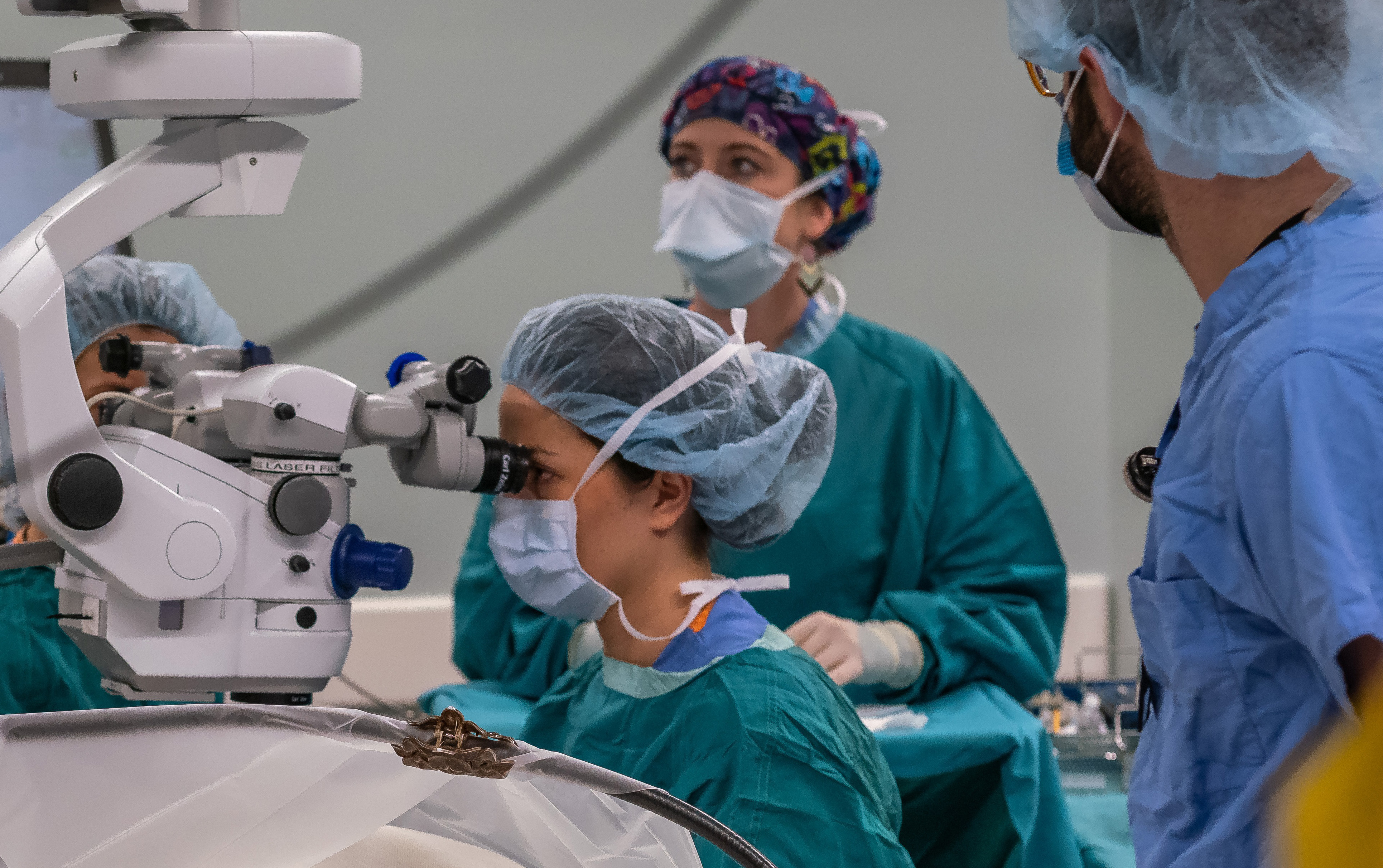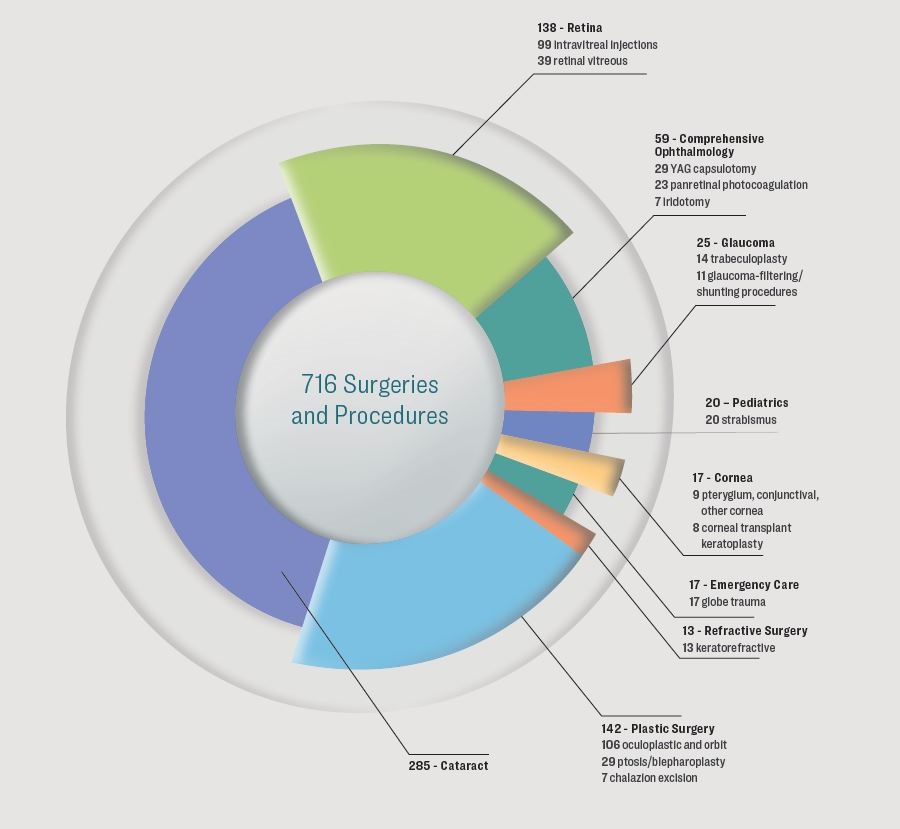
The Moran Eye Center’s highly regarded academic program combines quality training and rigorous surgical experience.
Third-year resident Tara Hahn, MD, operated on five patients during a recent Operation Sight Day to provide no-cost cataract surgery to underserved Utahns.

Three of them had complex white cataracts that pose several surgical challenges, starting with the high density of the lens nucleus. But Hahn, with her surgical mentors at her side, was prepared through her training at the John A. Moran Eye Center to provide a successful outcome for the patients.
Rising to the Challenge
Operation Sight Day, part of a bi-annual, donor-supported effort created by Moran residents in 2012, has been recognized as a national model by the American Society of Cataract and Refractive Surgery.
Moran is known for true expertise in taking care of its community. Residents and fellows participate in that care throughout their time here. When they leave, I am confident they are exceptionally prepared—with clinical and surgical training, and a host of other skills— to enter the complex landscape of health care today.
Jeff Pettey, MD, John A. Moran Eye Center vice chair of education
Staffed entirely by resident and attending physicians, nurses, and technicians who donate their time on a Saturday, the effort exemplifies everything Hahn values about her training at Moran: mentoring, the opportunity to work through complex cases, and giving back to the community.
"Everything I’m learning and experiencing will translate directly to the work I plan to do in the future," she said.
The Moran residency program gives her a distinct technical advantage.
"All of our attending surgeons are meticulous," she said. "They push you toward perfection—that is the goal—and nothing less. They are also constantly evaluating themselves, their techniques, and their outcomes."
Moran is known for our outstanding surgical numbers. But it’s about more than volume. The quality of those numbers is what counts because we learn different techniques and tools and are pushed to learn things beyond what is traditionally taught in residency.
Tara Hahn, MD
Connecting with Patients
While residents and faculty connect personally with each of their Operation Sight patients, one in particular stood out for Hahn.
"We had screened a homeless man in his 40s in our Resident Continuity Clinic," she said. "He had diabetes and was bilaterally blind with white cataracts and qualified for Operation Sight, but tracking him down to get him into the clinic for scans and then for surgery was difficult. It was part of my job to persist and do everything I could to get word to him."
Hahn will continue as a glaucoma fellow at Moran next year.
"The glaucoma surgeons here do some amazing work, and I really respect them. I also like the continuity of following patients over time—getting to know and grow with them."
Click here for more on Moran's academic program.
Surgery Strength in Numbers
At 11 Moran clinics, nearly 40 clinical faculty members, 12 fellows, 11 residents, and four interns conduct 146,000 patient visits and more than 6,300 surgeries annually, providing comprehensive care in nearly all ophthalmic subspecialties. In three years, one Moran resident on average performs more than 700 surgeries and procedures. Here’s a breakdown of that surgical experience on average over a chief resident's three years in training.
